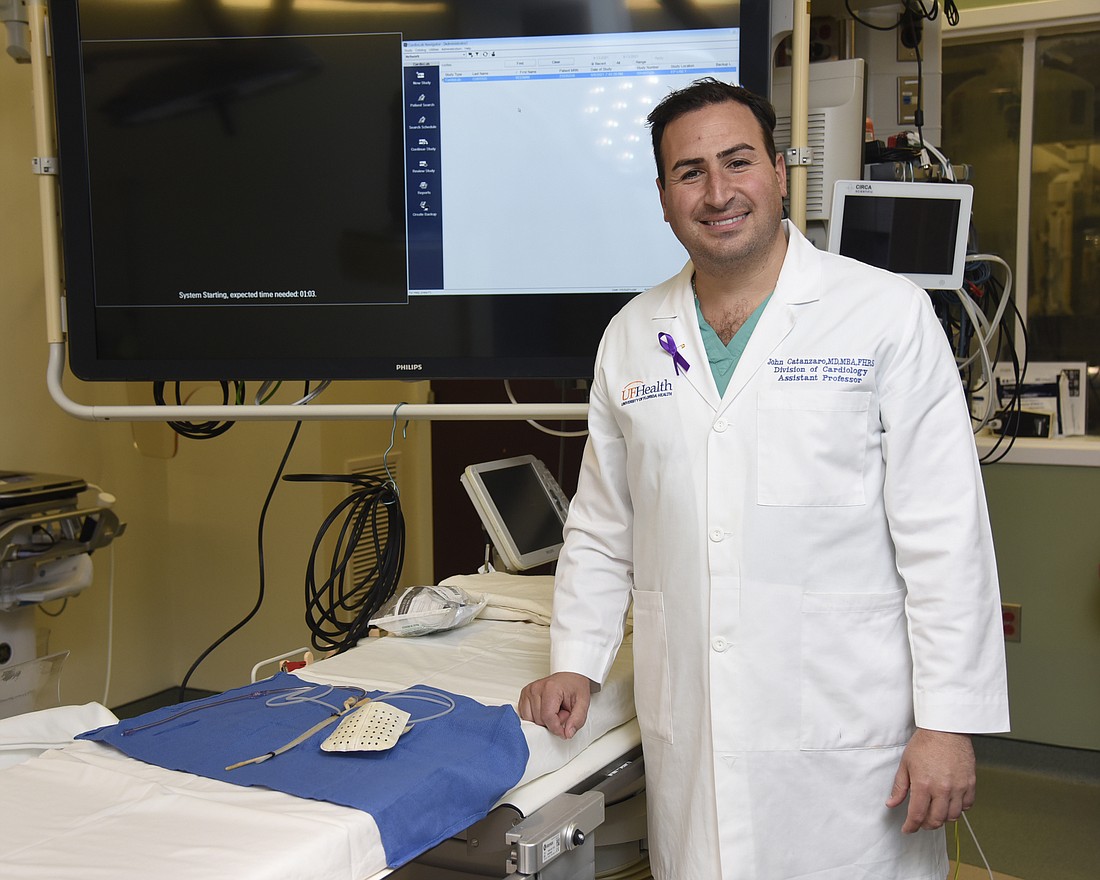
As a cardiologist with a Master of Business Administration, UF Health Jacksonville’s Dr. John Catanzaro sees medicine differently.
While he spends most of his time treating patients, a portion is spent looking for better, safer ways to care for cardiac patients, especially those with defibrillators and pacemakers.
“It’s about looking for problems,” he said.
“Along the way you notice there are problems, whether it happens to you or it’s a problem in the field or it’s a problem in the public. The better you can learn and understand the problem, the closer you can come to a solution.”
Catanzaro has had a hand in developing two devices for those patients with a third underway.
The latest is a phone case and shirt to protect patients with defibrillators from the magnets in the iPhone 12.
The magnet in the phone is strong enough to disable the defibrillator if it is within 6 inches of it, typically in a shirt pocket. Apple issued warnings to users to keep their phones more than 6 inches from their defibrillators, or 12 inches if it is wirelessly charging.
“It renders it inactive, so if you have a heart attack and the phone is in the chest pocket, the device won’t be able to shock you,” Catanzaro said.
Catanzaro filed a provisional patent for his development of a shirt and phone case with a blend of a material that blocks magnetic fields.
Another was a catheter that releases a gel into the esophagus to regulate its temperature during ablation procedures. In that process, doctors use cold or heat energy to correct heart rhythm problems, such as atrial fibrillation.
In that procedure, the esophagus, located next to the heart, is at risk of being damaged from the heat or cold energy. If damaged, a patient’s chance of death following the procedure is at about 80%.
Catanzaro said he partnered with a material scientist to create a prototype, tested it on animals to prove it is effective. He now is working to take the product to clinical trials in the next year.
The third invention was developed at UF Health Jacksonville. Catanzaro was the first in the world to implement it in 2018.
Catanzaro developed a regenerative bio envelope to protect a cardiac defibrillator and keep tissue from growing around it, rendering it less effective.
Rather than scar tissue growing around the device, new tissue with blood supply grows around it.
With scar tissue, energy from the defibrillator is absorbed and less of it reaches the heart.
Catanzaro said he is studying the envelope to show how it benefits patients over time.
In addition to his role as a cardiologist and electrophysiologist, Catanzaro leads the cardiac electrophysiology fellowship and teaches future doctors.
In that role, he encourages them to use new technologies and try to come up with their own.
“It’s great to use other people’s toys, but when you can develop your own, it’s even more fun,” he said.
“They really take a liking to coming up with your own idea and bringing it to life to commercialize something.”